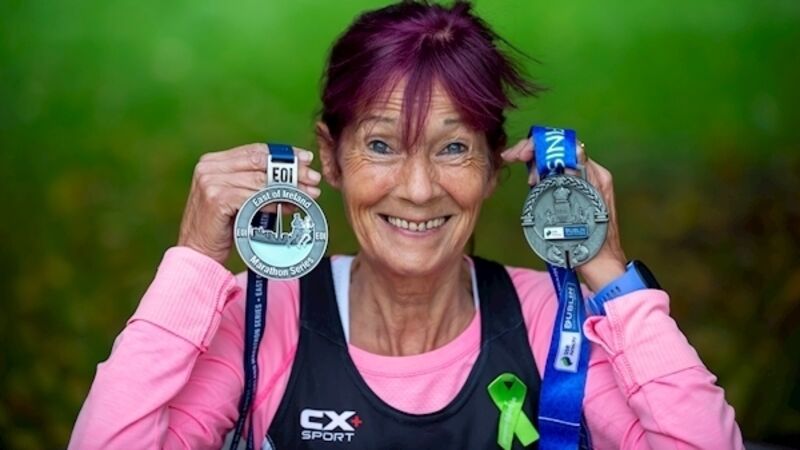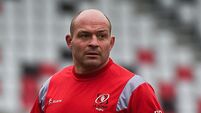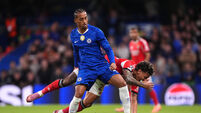‘Women are not little men’ — how sports science is finally changing with the times

Caroline Criado Perez won the Royal Society award recently for , which details the gender gap in data science.
Occasionally she refers to a huge gap when it comes to women and research in sports science. Is that true?
“It’s a definite reality,” says Aoife Lane, head of sport and health science at Athlone IT. “I see it every day.”
“Yes, and not just as subjects,” says Niamh Ní Chéilleachair, also of Athlone IT.
“From a data perspective, we don’t know enough, physiologically, about how women are performing,” adds Wesley O’Brien, Director of the B.Ed Sports Studies and Physical Programme in UCC, while David Kelly, also of Athlone IT, says: “100% — the gap is huge.”
Because science is all about measurement, Ní Chéilleachair has numbers to back up her assertion:
“The Journal of Sports Science has pointed out that female authors were underrepresented in sports science research, while a 2014 paper found that in a sample of 1,382 articles involving over 6 million participants, fewer than 40% of the participants were female.
“That’s five years ago but it shows the under representation, even if it’s only a sample, and shows the gap.”
Why is that?
“Caroline Criado Perez talks a lot in her book about the unknowing bias, and coming from the female side I think that’s right,” says Lane.
“A lot of the time it’s laziness, I don’t think it’s even ignorance — it’s too casual for that.
If you’re going out tomorrow as a fourth-year sports science student to do some work it’s likely easier to get guys for that project. It takes more time and effort to recruit girls to make it 50-50 or all-women in research.
That might be too bad for esoteric research topics, what does it mean in practical terms for sport?
“We start off with the general point that males tend to have more muscle mass and less body fat while females have lower aerobic power and are smaller,” says Kelly.
“How do we get better physically? There are similar principles involved but the degree to which they work for both men and women — we don’t really know and we presume a lot of the time that they work the very same way. But we don’t have evidence as to whether particular interventions benefit women in improving their performance because so little has been done.”
Ní Chéilleachair also stresses the significance of the gap in the context of other differences.
“It’s becoming more apparent now — a New Zealand researcher, Stacy Sims, takes the view that ‘women are not little men’, meaning that approaches for women shouldn’t be generalised because of what works for men.
“There are some areas where women can respond physiologically in the same way as men, but then there are factors such as the menstrual cycle and its effects on women, or thermoregulation — where it’s suggested that it takes women longer to acclimatise than men because they have different sweat rates.
If we make recommendations based on male sports science, then, are we doing females a disservice? I think there are certain situations where it’s accepted that males and females respond differently. The gap exists in the literature, and because of that we can’t answer definitively.
Kelly echoes her point: “As sports scientists you’re trying to improve standards, to be more specific, to do something in a more valid way, so when you’re presuming anything you’re walking on dangerous territory.
“Women looking at research involving men may be told that it’ll work for them, but we just don’t know in a lot of situations.”
There are models elsewhere worth following. Wesley O’Brien agrees with Ní Chéilleachair’s point about New Zealand, for instance.
“When we talk about health in general there’s physical education, sex education, mental education, social education, and often coaches working with girls can be reliant on physical education.
“But in New Zealand they look at this more holistically, bringing in the social, sexual, mental domains — even the spiritual domain.
Generally we have a lot of physical data on athletes — though not enough on female athletes — but almost nothing in those holistic terms.
“If we want more women to be recognised we need to look at that bigger picture; in Gaelic games we haven’t even begun to work on that, for instance. Because of that, everything is anecdotal instead of being research-informed.”
There are signs for optimism here as well. It’s long been suggested that girls leave organised sport in their teens, for instance, and Lane sketches out the context.
“We’re fairly sure they drop off in their teens — the Irish Sporting Lives document a few years ago showed that drop-off, but this is where we get caught. We keep saying the same thing and doing the same thing rather than moving to solutions.
“And researchers are now saying ‘let’s stop doing the same study and move to how we’re going to change it’ and seeing if that works, scaling it up to real-life studies. In this case we know girls are leaving sport, but are we sure how to stop it?
“No, we’re still producing studies about why. Research is great but translating it into the real world is the challenge.
“I don’t think it’s a surprise that they drop out around 14, when it comes to Féile in Gaelic games and competitive school teams in all sports, for instance — it gets really competitive then and if you’re not in the top crew of players, then where are you?
“I think that’s a big problem, you start to lose the participation and enjoyment in favour of getting better technically sometimes.”
As an example of the benefits of research, here there seems to be a potential solution because of data generated in the field.
Wesley O’Brien refers to the report he and Irene Hogan of Cork IT did for the LGFA when they surveyed members of U14 inter-county ladies’ teams:
“It’s interesting — 82% of players ranked winning a title the least important aspect of playing inter-county football. But when we asked coaches they ranked that as the most important aspect. So it shows a mismatch between coaches and athletes immediately.
“It’s great when a child and adult are like-minded, when you have that flow, but this data shows you’re pulling in two different directions you’re not going to get a meaningful experience. I’d commend the LGFA for doing this.”
O’Brien moves the conversation to a context wider than physical preparation: “We need to generate hard data on the positive attributes women are contributing to sport — we spoke about warm-ups but I’m referring to the entire coaching environment. ‘Women in sport’ isn’t just about participation. How well are they participating? How sustainable is their participation? To me these are questions that aren’t being addressed.
“The Scandinavian models are the obvious ones, but a lot of our agencies could look at what’s being done by Sport New Zealand and Australia. They’ve a very rich framework — they not only have a lifespan approach to sport, health and coaching, they have equal gender considerations.
“Looking at their policy documents there are consistent trends and women are always to the forefront.” The need to challenge girls is another key to progress, adds O’Brien.
“One big reason for the drop-off (in teens) is that for girls, in particular, it’s not meaningful enough as an experience. We need to challenge girls developmentally and sometimes there can be a hesitancy among coaches to push girls’ boundaries.
“But if we’re not challenging them the chances are they’ll take alternative pathways.”
The fact that so little work has been done in the area of sports science focused on women means opportunities abound there, says Kelly: “There’s huge space there for research. You’re trying to make research as novel as possible, and researching in this area offers plenty of novelty.
“The visibility of female athletes can only be good. By completing research on females you’re getting data on females and you’re also exposing more females to that research environment, giving them that interest in science. So it works in two ways.”
For all that, there are causes for optimism.
“Take awareness of the menstrual cycle,” says Ní Chéilleachair.
“It’s good that it’s not as much of a taboo now, and the more people speak about it and research it then athletes will be more comfortable talking to coaches and sports scientists about it. I think it’s still there a little bit, the coach might not feel comfortable talking about it with the athlete, but it would help a lot to have a more open conversation about this area.
“It’s certainly starting to improve, campaigns like 20x20 are raising visibility, and by raising visibility scientists are more inclined to include women in research projects where possible.
“Elud Kipchoge broke two hours for the marathon recently, but Bridget Kosgei broke the women’s record the next day,” says O’Brien.
“They’re both advancing the field but the man got most of the attention. A lot of girls in one of the classes I teach raised that point, and it’s interesting not only in itself but it shows something about people’s attitudes. I find a lot of defiance among our female student teachers when it comes to recognising female achievement and they’re right to be defiant.
“A lot of their case studies focus on female sportspeople, for instance, rather than the default male sportsperson. And rightly so.”













